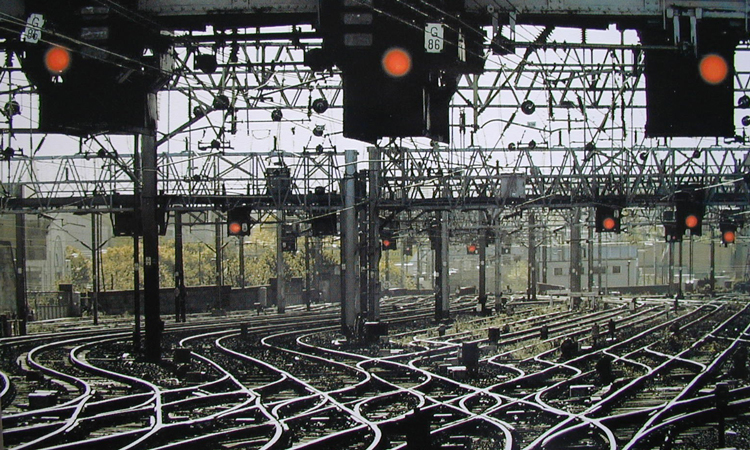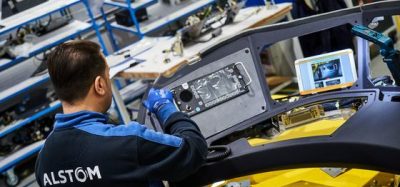The ERTMS ambition: A European success hanging in the balance
Posted: 30 January 2016 | Jean-Baptiste Simonnet - CER | No comments yet
Recognised as the voice of European railways for more than 25 years, the role of the Community of European Railway and Infrastructure Companies (CER) is to represent the interests of its members by actively providing input to EU policy. Their objective is to contribute to a regulatory environment that enhances business opportunities for European railway operator and infrastructure companies. With regards to the European Railway Traffic Management System (ERTMS), CER monitors and evaluates the implementation of ERTMS policies in close cooperation with its members. As CER’s Executive Director Libor Lochman and Senior Technical Advisor Jean-Baptiste Simonnet explain, it is through CER’s permanent dialogue with the legislators and other stakeholders that they are able to provide strategic visions as well as detailed opinions on the laws in order to promote better regulation for ERTMS development and deployment.


Not ‘just’ another signalling system in Europe
ERTMS is more than a popular signalling system already deployed in 30 countries around the world. ERTMS is primarily a European ambition enabling the convergence towards harmonised railway target systems and, ultimately, the Single European Railway Area.
However, this ambition is not without challenges: a business challenge for European rail operators, who must contend with the high cost of migrating to ERTMS from their current national systems and the double equipment this requires during the transition period; an industrial challenge for the rail suppliers, called to deliver single, uniform, compatible products despite having to comply with various national specifications; and finally, a heavy and demanding regulatory challenge for the policymakers tasked with defining ERTMS.
A detailed specification forms part of the European mandatory regulatory framework for ERTMS. Deadlines for deployment are set and some national as well as EU public funding is made available. Still, although general principles have been defined to allow the emergence of a good system, the regulatory provisions must be fine-tuned or amended to ensure that ERTMS will safeguard the general interests of improving rail competitiveness and ensuring pan-European interoperability.
Cooperation and concerted action by all rail industry actors – the key to ERTMS success
The objective of ERTMS is to develop and to deploy a single European control/command and signalling system that is fully interoperable across borders, that can be delivered by a broad supply base, and that will evolve based on compatibility principles. Interoperability and compatibility are collective European challenges, and CER, supported by the UIC (the International Union of Railways) and the ERTMS Users Group, is doing its utmost to cooperate with the European Railway Agency (ERA), as well as other institutions and railway representative bodies, in order to reach a consensus resulting in mutual benefits.
ERA’s central role as the ERTMS system authority has recently been confirmed in the context of the Fourth Railway Package. It appears now to be getting down to the real process of ERTMS specification development and implementation. This can only be of benefit if the process is based on cooperation between all actors involved in ERTMS development and deployment.
The last conference on ERTMS organised by ERA was entitled ‘Turning a mature system into a business case’. We are however in a difficult phase, where large investments are necessary in the short and medium-term, while the full benefits of interoperability, standardisation and economies of scale will only appear over time. During this migration period, ERTMS must not become an economic factor disadvantaging railways in intermodal competition. It is essential that the required investments and life-cycle costs for on-board as well as track-side equipment be reduced.
While ERTMS specification now seems mature enough to allow large-scale deployment, ERTMS products and certification processes still need to be improved. Due to various national rules and product incompatibilities, it is still possible for an ERTMS train, compliant with the last ERTMS specification (baseline 3) and authorised by the appropriate bodies, to be unable to run on all European ERTMS lines. Urgently achieving full interoperability of ERTMS on-board equipment without any further delay must be the key objective in ERTMS development. A constructive and relevant dialogue must be established to identify and solve diverging views between safety authorities, infrastructure managers and manufacturers, for the benefit of ERTMS users – the railway undertakings.
ERTMS evolution: time for European ambition but also discipline
Railway signalling needs to evolve in the coming years. Infrastructure capacity has to be used to the maximum extent possible or for the lowest cost. When planning the long-term evolution of ERTMS, it is essential to take into account the technological and economic environment surrounding the system, as well as legacy considerations (many older national systems are already in place and have to be interfaced with ERTMS). A strategic roadmap for the system’s evolution must guide its development. If ERTMS equipment is to become the unique criteria in terms of control command and signalling for access to the railway lines and networks in Europe, we must consider how to manage its technological improvement and consistency vis-à-vis other signalling systems like Communication Based Train Control (CBTC).
Pilot projects on specific lines should drive the increasing maturity and the continuous technological improvement of the system over the next years, and promising developments can already be identified. With ERTMS Level 3, less trackside equipment will be necessary, and virtual coupling will allow the best use to be made of infrastructure capacity. If it is deployed in conjunction with Automatic Train Operation (ATO), optimised speed profiles will be achieved, improving punctuality and reducing energy consumption. Through satellites, sensors and enhanced automation, we can undoubtedly expect the operational and safety performance of railways equipped with ERTMS to keep getting better.
Digital technologies will certainly open up many new opportunities for the evolution of railway signalling. ERTMS hardware components will get less and less specific. If telecom operators provide appropriate 5G coverage of the railway infrastructure, one could imagine 5G sensors allowing not only to reduce maintenance needs, but also offering a solution for train integrity checks. New communication services may also be defined, offering efficient alternatives to today’s mobile rail radio (GSM-R). However, ambition for ERTMS must go hand-in-hand with discipline. We must always question how to make the best use of new technologies while retaining ERTMS as a modular platform delivering interoperability and allowing true benefit for the railway users. Technology is constantly changing and consequently affecting the life cycle of equipment. As railways become increasingly dependent on external technology, their entire approach to asset management will inevitably change and it will be more and more important to find consensus within the sector and with the supply industry on key user requirements which support interoperability, performance and low costs.
From individual non-coordinated decisions to a stable and complete ERTMS specification for all
The current challenge is to define a framework facilitating the migration to ERTMS. To allow the convergence towards fully interoperable products, it is crucial for the mandatory specification to remain stable during a sufficiently long period. This specification can be stable only if no new changes are introduced affecting the backward and forward compatibility between products. The stability period should allow fleet owners to equip their trains without facing unpredictable and costly retrofitting. For infrastructure managers, this time should allow them to get rid of any network access criteria related to control command and signalling not included in the ERTMS specification. In addition, with a stable mandatory specification for ERTMS, the system costs will begin to be predictable, in particular for railway undertakings.
If the specification as it currently stands can remain stable over a sufficiently long period, many trains equipped today with ERTMS would probably keep the same hardware for another decade. For the interface between ERTMS components and between ERTMS and the train, the specification should however be further developed, so as to offer harmonised solutions to be deployed across Europe, regardless of national differences in safety and operation rules. This fine-tuning would facilitate product upgrade, in particular the migration to a future new baseline specification or a ‘plug-and-play’ approach to ERTMS-related modules like ATO. It seems essential to progress towards modularisation and to fully specify some form of interface within the system (grey box approach as opposed to today’s black box approach). There is no shortage of ideas on ways to achieve this; the real task now is to collectively refine them and settle on a common approach for their introduction into a comprehensive and coherent specification.
A true European governance enabling the involvement of all ERTMS stakeholders and decision-makers is now a must. Infrastructure managers will have to deliver reliable ERTMS implementation timelines as well as decommissioning plans for national signalling/train protection systems. Tendering for ERTMS must be simplified and specific requirements have to be identified and harmonised so they do not jeopardise economies of scale and interoperability.
Development must deliver on-time, fully mature, compatible systems. Disciplined evolution and configuration management mechanisms have to be applied in order to avoid the current problem of several ERTMS ‘dialects’ affecting interoperability. Year-after-year, ERTMS is getting more structured; a Europe-wide programme is on the way. As long as product development, the appetite for evolution and the needs of day-to-day operations are well managed, it cannot fail to become a success.
Biographies




Stay Connected with Global Railway Review — Subscribe for Free!
Get exclusive access to the latest rail industry insights from Global Railway Review — all tailored to your interests.
✅ Expert-Led Webinars – Gain insights from global industry leaders
✅ Weekly News & Reports – Rail project updates, thought leadership, and exclusive interviews
✅ Partner Innovations – Discover cutting-edge rail technologies
✅ Print/Digital Magazine – Enjoy two in-depth issues per year, packed with expert content
Choose the updates that matter most to you. Sign up now to stay informed, inspired, and connected — all for free!
Thank you for being part of our community. Let’s keep shaping the future of rail together!
Issue
Related topics
European Rail Traffic Management System (ERTMS), Infrastructure Developments, Signalling, Control & Communications
Related organisations
Community of European Railway and Infrastructure Companies (CER)







